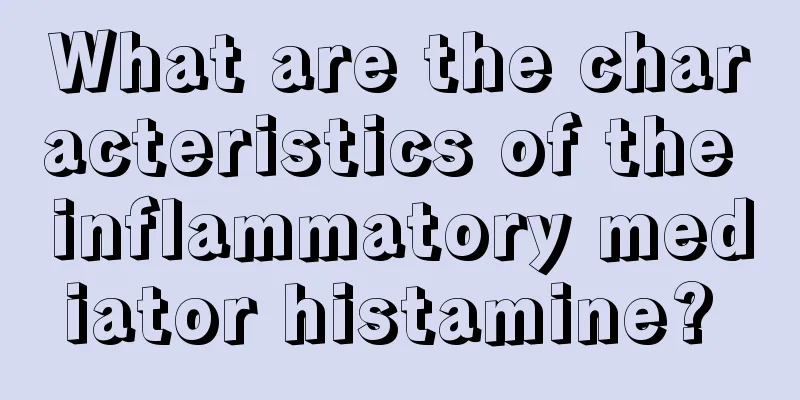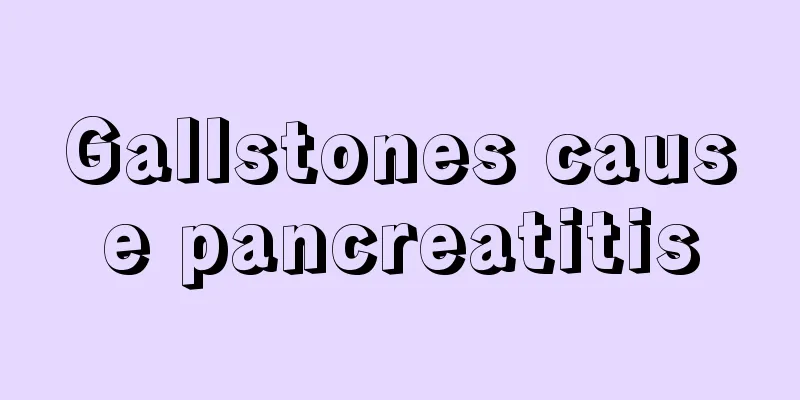What are the characteristics of the inflammatory mediator histamine?

|
The reason why inflammation occurs in the human body is that inflammatory mediators must be involved. The inflammatory mediators that people often talk about usually include white blood cells and vascular reactions. During the inflammation process, these inflammatory mediators must participate in a series of chemical reactions. For example, blood vessels need to dilate, and then white blood cells will infiltrate. This series of reactions is called inflammatory mediator reaction. In this process, the inflammatory mediator histamine will appear. The inflammatory mediator histamine has the following functions and characteristics. Characteristics of the inflammatory mediator histamine: There are two points worth noting about the role of inflammatory mediators. Different media systems are closely related to each other Complement, kinins, and the activation of the coagulation and fibrinolytic systems and their products are closely related, and the effects of these inflammatory mediators are also intertwined. Almost all media are in a sensitive regulation and balance system On the one hand, mediators that are in a state of strict isolation within cells, or in a precursor state in plasma and tissues, must go through many steps before they can be activated. During their conversion process, rate-limiting mechanisms control the speed of the biochemical reactions that produce the mediators. On the other hand, once activated and released, mediators are rapidly inactivated or destroyed. The body uses this regulatory system to keep the body's media in dynamic balance. Kinin system Activation of the kinin system ultimately produces bradykinin, which can cause dilation of arterioles, contraction of endothelial cells, increased permeability of venules, and contraction of smooth muscle outside blood vessels. Bradykinin is rapidly inactivated by kinins in plasma and tissues, and its effects are mainly confined to the early stages of increased vascular permeability. Complement system The complement system consists of a series of proteins, and complement is activated by two pathways—the classical pathway and the alternative pathway. In the complex environment of acute inflammation, the following factors can activate complement: ① The antigenic components of pathogenic microorganisms bind to antibodies and activate complement through the classical pathway, while the endotoxins of Gram-negative bacteria activate complement through the alternative pathway. In addition, enzymes produced by certain bacteria can also activate C3 and C5. ② Enzymes released by necrotic tissue can activate C3 and C5. ③ Activation of kinins, fibrin formation and degradation systems and their products can also activate complement. Complement can affect acute inflammation in the following three ways: ① C3a and C5a (also known as anaphylatoxins) increase vascular permeability and cause vasodilation, both by causing mast cells and monocytes to further release inflammatory mediators; C5a can also activate the lipid oxygenase pathway of arachidonic acid metabolism, causing neutrophils and monocytes to further release inflammatory mediators; ② C5a causes neutrophils to adhere to vascular endothelial cells and is a chemotactic factor for neutrophils and monocytes; ③ C3b has an opsonin effect when bound to the bacterial cell wall, which can enhance the phagocytic activity of neutrophils and monocytes because these phagocytes have receptors for C3b on their surfaces. C3 and C5 are the most important inflammatory mediators. In addition to the activation pathways described above, C3 and C5 can also be activated by proteolytic enzymes present in inflammatory exudates, including plasmin and lysosomal enzymes. This forms an endless loop of neutrophil migration, where complement has a chemotactic effect on neutrophils, and the lysosomes released by neutrophils can activate complement. Coagulation system Factor activation can not only activate the kinin system, but also activate the blood coagulation and fibrinolysis systems at the same time. In the process of converting fibrinogen into fibrin, thrombin releases fibrin polypeptide, which can increase vascular permeability and is also a chemotactic factor for leukocytes. The fibrinolytic system can induce inflammatory vascular changes through the kinin system. Plasminogen activator factor produced by endothelial cells, leukocytes and other tissues can convert plasminogen into plasmin, which affects the course of inflammation through the following three reactions: ① By activating the first? ① The factor initiates the production process of bradykinin; ② cleaves C3 to produce C3 fragments; ③ degrades fibrin to produce its cleavage products, thereby increasing vascular permeability. |
<<: Photorejuvenation treatment for red blood streaks
>>: Photorejuvenation to remove red blood streaks
Recommend
Analysis of recurrent cases of endometrial cancer
Endometrial cancer, also known as uterine body ca...
What should I do if I have bad breath after taking diet pills?
Taking diet pills causes bad breath. You need to ...
Is photodynamic therapy painful?
With the development of science and technology, m...
Diet for nasopharyngeal carcinoma chemotherapy
For nasopharyngeal cancer patients, chemotherapy ...
Does double eyelid liposuction hurt?
Double eyelid liposuction is a relatively common ...
How can the big three positive virus turn negative
I believe many people are familiar with Hepatitis...
What to do if you are allergic to dust on your face
Due to the wide variety of cosmetics available to...
How to treat lung cancer in the late stage? Symptoms and treatment methods of lung cancer in the late stage
Lung cancer is a common malignant tumor of the lu...
What are the dangers of mild fatty liver
We all know that the health of one person involve...
What fruits can I eat for dysmenorrhea
Dysmenorrhea is very painful for women. Some wome...
What to do after a breakup to get over the pain as quickly as possible
Lovelorn is a common thing. No matter whether you...
What are the specific causes of lung cancer
What are the causes of lung cancer? People have n...
Precautions for melanoma treatment
Melanoma is extremely harmful, and the key to tre...
Six clues of early lung cancer
Currently, the mortality rate of lung cancer cont...
Pathological classification of esophageal cancer
The esophagus is a tube connecting the stomach an...









